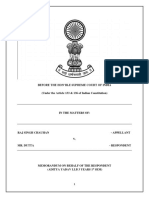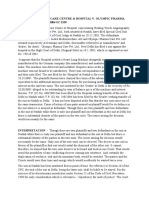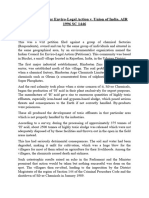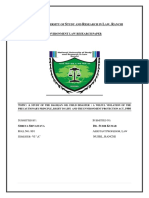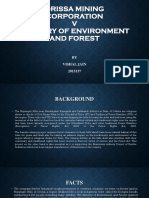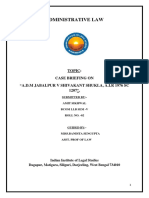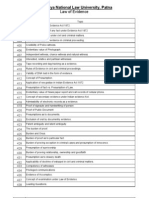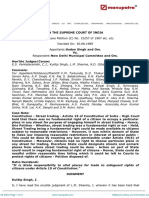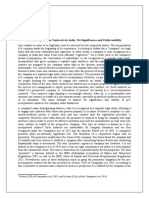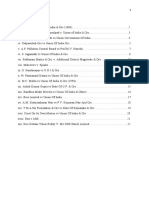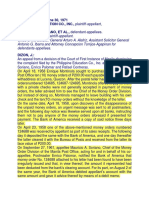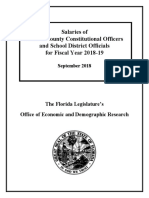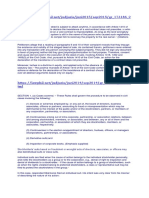0% found this document useful (0 votes)
218 views9 pagesHanuman Laxman Aroskar Case Analysis
This case discusses the Environmental Clearance granted for an airport development project in Mopa, Goa. The petitioner argued that the Environmental Impact Assessment failed to disclose material facts like the number of trees required to be felled and the presence of Ecologically Sensitive Zones. The Supreme Court held that the EIA report concealed vital information and failed to follow due process as required. The Court emphasized that environmental governance must follow the principles of environmental rule of law and the means to achieve development cannot compromise transparent procedures. The Environmental Clearance was set aside on the grounds that the EIA report was formed through a breach of due process.
Uploaded by
Archisha DharCopyright
© © All Rights Reserved
We take content rights seriously. If you suspect this is your content, claim it here.
Available Formats
Download as DOCX, PDF, TXT or read online on Scribd
0% found this document useful (0 votes)
218 views9 pagesHanuman Laxman Aroskar Case Analysis
This case discusses the Environmental Clearance granted for an airport development project in Mopa, Goa. The petitioner argued that the Environmental Impact Assessment failed to disclose material facts like the number of trees required to be felled and the presence of Ecologically Sensitive Zones. The Supreme Court held that the EIA report concealed vital information and failed to follow due process as required. The Court emphasized that environmental governance must follow the principles of environmental rule of law and the means to achieve development cannot compromise transparent procedures. The Environmental Clearance was set aside on the grounds that the EIA report was formed through a breach of due process.
Uploaded by
Archisha DharCopyright
© © All Rights Reserved
We take content rights seriously. If you suspect this is your content, claim it here.
Available Formats
Download as DOCX, PDF, TXT or read online on Scribd
/ 9

